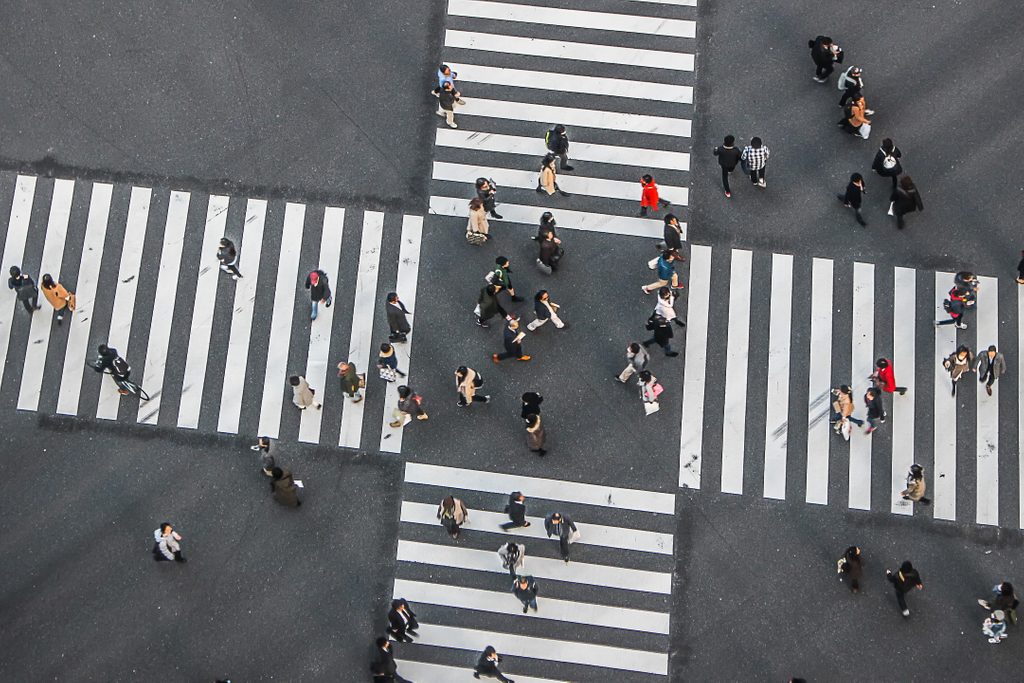How Many People Are There in the World?
Updated: Jan. 26, 2023

In honor of the United Nation's World Population Day, we take a look at some useful facts about the planet (and population!) we call our own.
How many people are in the world?
Get this: You are one of approximately 7.7 billion people living on Earth right now, according to the U.S. Census Bureau. While just 170 million people made up the world’s population 2,000 years ago, the human race has exploded in the centuries since. In fact, the United Nations estimates the global population grows at a rate of 250 people every minute—and is expected to reach 11 billion by the year 2100.
Yet with our flourishing population comes challenges, including higher demands for resources like food, water, and land, as well as larger quantities of harmful waste. To highlight and address these issues, the United Nations launched World Population Day in 1989, and it is now celebrated annually on July 11. This year, we take a look at some fascinating population facts to get you in the spirit. Start by testing your knowledge of the world’s most populated cities.
Which country has the most people and the least?
Six countries—the United States, Brazil, Pakistan, India, China, and Indonesia—hold nearly half of the world’s population, according to the Pew Research Center. Among them, China and India top the list with the largest populations in the world (the United States comes in third). China has an estimated 1.4 billion people, while India’s population is about 1.3 billion people and is on track to become the country with the highest population. Meanwhile, with a population of just 801 people, Vatican City holds the record for the world’s smallest population.
Which country’s population is the oldest? Youngest?
When it comes to figuring out how many people are in the world, it’s important to consider average ages, as this data tells us a lot about what the world’s population will look like in the future. Monaco’s citizens are among the oldest in the world, with an average age of 55.4 years old, although the country with the highest population of people over 65 is Japan, where 28 percent of its citizens are over retirement age. The country with the world’s youngest population is Niger; around 50 percent of its population is made up of youth aged 14 or younger.
Which country has the highest population density? The lowest?
The world’s population density (excluding Antarctica) averages about 142 people per square mile, or 55 people per square kilometer. With a whopping 54,000 people per square mile, the small Chinese territory of Macau has the highest population density in the world. Mongolia, on the other hand, despite being the 18th largest country globally, boasts the world’s lowest population density. There are just five Mongolians for every square mile, because of the harshness of the terrain, and the traditional nomadic lifestyle of the inhabitants. Sounds like Mongolians would feel right at home in this state—it’s so sparsely populated it only has two escalators!
How many people have ever lived on Earth?
The answer to how many people are in the world changes dramatically over the centuries, and especially over millennia. As of 2020, it’s estimated that over 108 billion modern humans have lived on the planet throughout history (starting about 50,000 years ago). That means approximately 7 percent of all the people that have ever lived are roaming around right now.
How has the COVID-19 pandemic affected population data?
The numbers that make up how many people are in the world are likely to shift slightly because of the effects of the COVID-19 pandemic. Population growth in much of the world has already been slowing, particularly in wealthier countries. The Atlantic identifies three major factors that contribute to population numbers in the United States (and other wealthy countries): births, deaths, and migration. Because of the pandemic, more people are choosing to postpone planned pregnancies, and border closures and restrictions have reduced immigration considerably to all but the wealthy. Meanwhile, although the fall in daily activity may have reduced deaths from accidents, the increased death toll from the pandemic is likely to nullify that. Demographics are also likely to change somewhat, as COVID-19 fatalities disproportionately impact communities of color and older people. The Pew Research Center found that COVID-19 deaths have been highest in the countries where the average age is older than the global average, such as Italy and the United States.
The Atlantic estimates that the impact of the pandemic could lead to somewhere between 500,000 to 1 million fewer Americans in the population at the end of 2021, leading to much less growth, although the population would still rise overall. This trend is likely to be repeated in much of the world but is unlikely to have a lasting impact on how many people are in the world. In countries where the rate was already falling, population growth may have slowed more than it would have otherwise, but in countries where the population replacement rate is steady or increasing, COVID-19 is likely to provide only a temporary dip.
Will the world’s population continue to grow?
Although the world’s population grew by about 5.5 billion during the 20th century alone (and has continued to grow since, adding nearly 2 billion in the last 20 years), that boom may be about to bust. The Brookings Institution projects that the world’s population, now 7.7 billion, will increase only slightly over the next several decades—and could even peak by 2070, particularly if more women worldwide receive a secondary education. Higher rates of education among women is linked to lower rates of fertility in women, as education helps women to avoid child marriage, young childbearing, and undertake family planning. Reducing how many people are in the world (and thereby reducing the number of resources needed and the amount of greenhouse gas emissions) could have a remarkable effect on the fight against climate change.
Sources:
- U.S Census Bureau: “United States and World Population Clock”
- United Nations: “Population”
- Pew Research Center: “Which 7 countries hold half the world’s population?”
- World Atlas: “The Least Populated Countries in the World”
- Population Reference Bureau: “Countries With the Oldest Populations in the World”
- World Atlas: “Countries with the Lowest Population Density”
- Population Reference Bureau: “How Many People Have Ever Lived on Earth?”
- The Atlantic: “Will Coronavirus Deaths Affect the U.S. Population?”
- Pew Research Center: “Populations skew older in some of the countries hit hard by COVID-19”
- Brookings Institution: “10 Useful Facts to Know on World Population Day”



